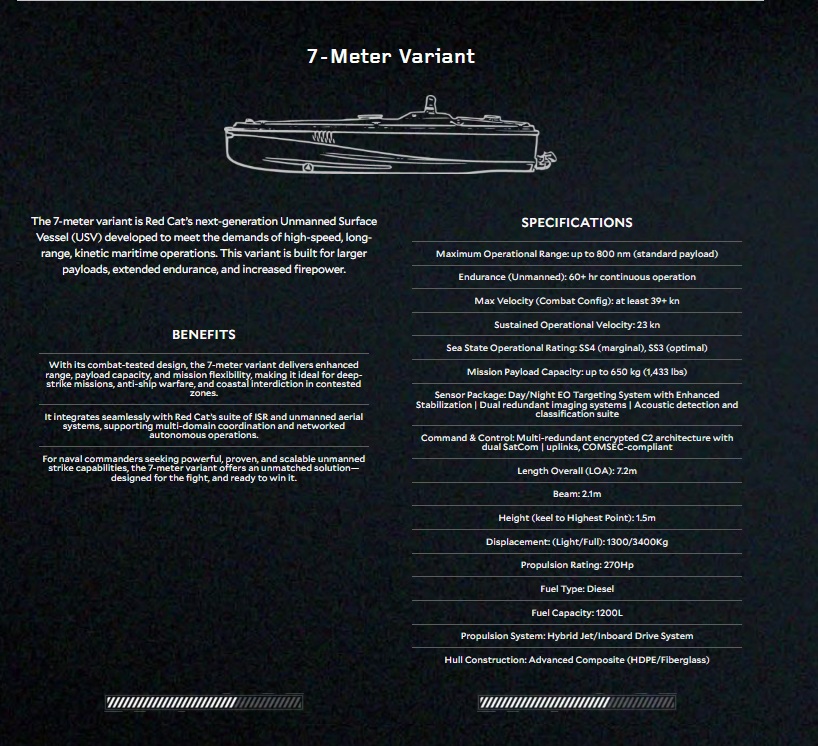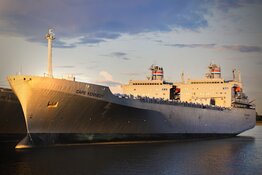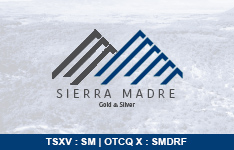Red Cat Holdings Inc. (RCAT:NASDAQ) recently announced it would be expanding its maritime drone capabilities, using battle-tested unmanned surface vessels. It will be doing this by expanding its multi-domain family of systems through a new line of unmanned surface vessels (USVs). Red Cat noted in the release that this showcases Red Cat's official entry into the maritime autonomy market, and "reinforces its position as a provider of comprehensive, interoperable unmanned systems for air, land, and sea operations."
Red Cat's introduction of USVs represents a significant advancement. This move responds to increasing geopolitical tensions and U.S. defense priorities that emphasize reestablishing American maritime dominance globally. Red Cat believes it is positioned to provide American-made solutions addressing urgent operational requirements of U.S. and allied naval forces.
In the release, Red Cat CEO Jeff Thompson commented, "This is a pivotal moment for Red Cat as we evolve from an aerial-first drone company into a true multi-domain defense provider. This expansion into maritime platforms opens significant opportunities in a fast-growing and urgently needed defense sector. As the U.S. and its allies confront rising maritime threats, particularly in the Indo-Pacific, there’s a clear demand for powerful, proven, and scalable USVs made in America. With these USVs, we’re helping to shape the future of autonomous warfare and strengthening the foundation of U.S. defense manufacturing."
 Red Cat will be launching its USV line in collaboration with a leading global USV manufacturer.
Red Cat will be launching its USV line in collaboration with a leading global USV manufacturer.
The system undergoes daily combat testing and can function autonomously or in manned-unmanned teaming (MUM-T) configurations.
The technology has accumulated over 10,000 hours of operational time in actual combat missions.
The company noted that moving to production will accelerate Red Cat's development of USVs that integrate with its existing intelligence, surveillance, reconnaissance, and unmanned aerial systems, supporting operations across multiple domains and swarm capabilities.
"This system has been used day in and day out in the current conflict, accumulating tens of thousands of hours in real combat operations and achieving dozens of successful kinetic engagements against enemy assets, more than any navy since World War II," Thompson commented.
"By partnering with a company that has extensive proven experience and is well beyond the proof-of-concept stage, we gain a substantial competitive advantage as we enter this market."
Red Cat plans to begin production in Q3 of a seven-meter Expeditionary Multi-Role Craft designed for high-speed, long-range, kinetic maritime operations.
It accommodates larger payloads, offers extended endurance, and increased firepower.
This version features enhanced range, payload capacity, and mission flexibility, making it suitable for deep-strike missions, anti-ship warfare, and coastal interdiction in contested areas.
In a May 15 research note, Michael Latimore of Northland Capital Markets wrote of the news, saying, "Yesterday, Red Cat announced the launch of a new product, its USV. USVs can provide surveillance and kinetic strikes on water. USV can work in tandem with flying drones. We believe Red Cat will build the vessel in the U.S., and their partner will provide the software, AI, and intelligence. The tech partner here has considerable experience, including operating systems that have destroyed 25% of the Russian fleet in the Ukraine war. The firms have bid on a large contract already. Red Cat expects production to begin in 3Q."
Maritime Drone Use Evolving
The increasing use of sea drones or USVs and continually advancing drone technology are rapidly and dramatically changing naval warfare. Proof of this is Ukraine's recent takedowns of two fast Russian fighter jets with a missile launched from a USV, the first ever attacks of their kind, reported Naval News on May 5.
Ukraine used a MAGURA V7, a larger, cleaner and better conceived MAGURA V5 (Maritime Autonomous Guard Unmanned Robotic Apparatus V type), Naval News noted. MAGURA V5 is multipurpose, capable of surveillance, reconnaissance, search and rescue, mine countermeasures, marine protection and combat missions, Sea Waves Magazine described.
Previously, Ukraine had used these sea drones solely to attack and sink ships. For these described recent operations, though, it fired a modified R73 missile, typically launched from a fighter jet, from the MAGURA V7, a May 3 bulgarianmilitary.com article pointed out. Given the outcome, this was a successful integration of an air-to-air missile onto a sea drone.
"The operation showcases a dramatic evolution in drone warfare and raises questions about the future of military technology and tactics," the writer commented.
Companies in the Emerging Space
Last month, Red Cat Holdings began integrating Ocean Power Technologies Inc.'s (OPTT:NYSE.American) WAM-V and PowerBuoy technology platforms into its Teal-2 drones to make them capable of air, sea, and subsea defense and security missions, a news release noted.
WAM-V, or wave adaptive modular vessel, is a class of autonomous surface vehicles that uses an articulating suspension system to minimize structural loading, according to the New Jersey-based manufacturer's website. This ultralight, modular vessel can perform in sea conditions that an ordinary boat of similar size cannot. PowerBuoy is an uninterrupted power supply, as it constantly recharges itself by harvesting energy from waves.
The private, Texas-based company Saronic aims to address gaps in U.S. shipbuilding capacity and ultimately deliver the types and quantity of autonomous ships needed to create and sustain the U.S. military’s hybrid fleet. Recently, reported USNI News, Saronic acquired Gulf Craft, a Louisiana-based shipbuilder, for a USV production and prototyping hub.
Michael Latimore, Northland Securities analyst, reiterated his Outperform rating and gave a price target of US$13.
Also, Saronic introduced the Marauder, an autonomous and unmanned 150-foot-long surface vessel. It can loiter for at least 30 days, travel 3,500 nautical miles, loiter for at least 30 days and support payloads up to 50 metric tons.
Earlier this year, noted The Robot Report, the company raised US$600 million (US$600M) to build Port Alpha, a new generation shipyard for large-scale production of medium- and large-class ASVs for defense applications. Saronic is seeking a location for it.
General Dynamics Corp.'s (GD:NYSE) subsidiary, Electric Boat, is producing two fast, Virginia-class attack submarines, reported Sea Waves Magazine on May 3. This is to fulfill its US$18.4 billion (US$18.4B) contract with the U.S. Navy, awarded earlier this month.
These corporate undertakings align with U.S. President Donald Trump's push for an overhaul of the country's commercial and military maritime sectors.
"To boost our defense industrial base, we are also going to resurrect the American shipbuilding industry, including commercial shipbuilding and military shipbuilding," Trump said during an address in February to Congress, UNSI News reported.
His April 9 Executive Orders, called "Restoring America's Maritime Dominance," called on Administration officials to develop a plan for revamping the U.S. maritime industry.
14.8% Forecasted CAGR for Sector
The outlook of the commercial drone services market between 2025 and 2035 is one of continued growth, according to Fact.MR. It predicts the industry will expand during this period at a 14.8% compound annual growth rate, reaching US$30.3B from US$7.62B.
The market analysis and insights firm wrote that by early 2025, "the industry was consolidating around scalable, enterprise-level models." Energy, security, and logistics companies were deploying drone fleets for regular inspection, real-time monitoring, and surveillance.
Looking ahead, "the ecosystem is expected to evolve into a critical pillar of industrial and civic operations," wrote Fact.MR. "With AI, edge computing and onboard sensory technologies reaching new levels of sophistication, drones will play a vital role in autonomous navigation, predictive maintenance and geospatial intelligence."
Analysts Bullish on Red Cat
Technical Analyst Clive Maund wrote on May 6 that Red Cat's stock was showing several bullish signs. These included its steep drop from the head and shoulders top, it stopping where a double bottom base pattern formed, it starting to complete the double bottom, the accumulation line's positive divergence, and upward trending momentum. For these fundamental and technical reasons, the stock looks as though it should start higher again, noted Maund.
"Probably the best tactic for those interested in the stock is to buy a quantity here, aware that it may take some time to work its way through the resistance especially in the US$7–US$9 zone, and when it looks like it is close to accomplishing this, buy some more," Maund recommended. (RCAT's price at last closing was US$6.15 per share.)
Michael Latimore, Northland Securities analyst, had a an Outperform rating on Red Cat and a price target suggesting 111% upside from the current share price, Fintel reported. Northland initiated coverage on the drone technology company in March.
On May 15, Latimore reiterated his Outperform rating and gave a price target of US$13.
Ownership and Share Structure
According to Refinitiv, management and insiders own just under 19% of Red Cat, including CEO Thompson, who holds 14.46%.
Institutional investors own about 33.69%. The Vanguard Group Inc. has 2.93%, AWM Investment Co. owns 2.10%, and Pelion Venture Partners has 1.05%.
The rest is in retail.
The drone company has 85.62M outstanding shares and 69.19M free float traded shares. Its market cap is US$497.87M. Over the past 52 weeks, its stock has traded between US$0.75 and US$15.27 per share.
| Want to be the first to know about interesting Technology investment ideas? Sign up to receive the FREE Streetwise Reports' newsletter. | Subscribe |
Important Disclosures:
- As of the date of this article, officers and/or employees of Streetwise Reports LLC (including members of their household) own securities of Red Cat Holdings Inc.
- Doresa Banning wrote this article for Streetwise Reports LLC and provides services to Streetwise Reports as an independent contractor.
- This article does not constitute investment advice and is not a solicitation for any investment. Streetwise Reports does not render general or specific investment advice and the information on Streetwise Reports should not be considered a recommendation to buy or sell any security. Each reader is encouraged to consult with his or her personal financial adviser and perform their own comprehensive investment research. By opening this page, each reader accepts and agrees to Streetwise Reports' terms of use and full legal disclaimer. Streetwise Reports does not endorse or recommend the business, products, services or securities of any company.
For additional disclosures, please click here.










































